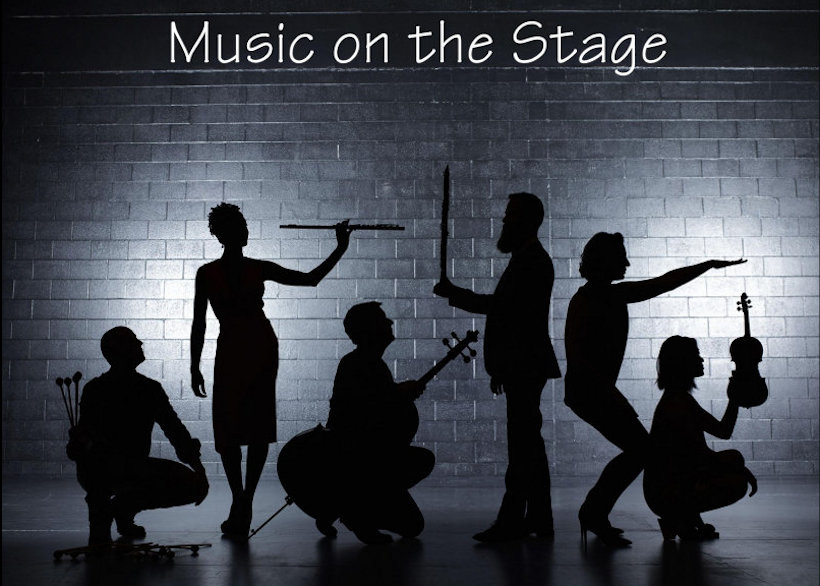6. On Point.
Ballet, like classical music, is built on a formal framework of precisely-defined elements compiled over
the course of several centuries, elements which require hours of daily practice from even the most seasoned
performers. Also like music, ballet is an abstract art that works without words or precise references to the
real world—yet it is capable of great expressivity. In the first hour, we will look at the rise of Romantic
ballet in the early 1800s, and the changes that brought it about: shifts in subject-matter, the invention of
new steps, developments in costume and footwear, and the rise of the female virtuoso.
We begin the second hour with Marius Petipa's Tchaikovsky ballets, looking at his use of an elaborate language
of gesture in place of dialogue, and his tendency to vary the pace with highly-specific character numbers—both
being ways of circumventing the formal limitations mentioned above. Finally, we see ballet doing precisely the
opposite, using form to structure even its most expressive pas-de-deux, eventually leading to
20th-century abstract ballets in which form is all. rb.
The script, videos, and images will be posted immediately after class.
The list below includes either the clips shown in class (including my animated titles) or close substitutes, plus
quite a number of additional items; all substitutes and added items are *asterisked.
The substitutes include the following: (a) the same scenes from Giselle with either different artists, or the same
artist with a different company; (b) a shorter, different section of the Robert le Diable nuns' ballet; (c) two
other sections of Symphonic Variations, though both with the same cast that we watched.
The additional items include the following: (a) a full performance of Pas de Quatre, albeit in mediocre video;
(b) the first 22 minutes of La fille mal gardée plus a couple of other fun clips; (c) the complete opening scene of
Konservatoriet; (d) two other divertissement items from The Sleeping Beauty: the Little Red Riding Hood
scene and the Bluebird pas-de-deux; and (e) a fascinating short documentary on Symphonic Variations with
members of the original cast.
All items are cued to the place we started in class. However the clips of the Taglioni nuns' ballet, the Royal Ballet
Apollo, and the Balanchine Serenade are of the complete work, and the Bolshoi Sylphide scene is much
longer than we played. rb.
| GETTING OFF ON THE RIGHT FOOT |
| |
Animated titles |
|
* All five section titles
|
| |
Pas de Quatre |
|
* Opening
(Japanese video shown in class)
* Complete ballet
(Berlin and Bolshoi soloists)
|
| |
| RUSTIC RETREATS |
| |
Giselle |
|
* Act I mad scene (same production)
(Natalia Osipova, Royal Ballet)
* Act I mad scene (same ballerina)
(Alina Cojocaru, Manuel Legris, Tokyo)
* Act II pas-de-deux
(Natalia Osipova, Carlos Acosta)
|
| |
La fille mal gardée |
|
* Pas-de-deux shown in class
(Marianela Nuñez, Carlos Acosta)
* Opening scenes
(22-minute section including the above)
* Widow's clog dance
(William Tucker)
* Act II maypole dance
(Maypole dance from Act II)
|
| |
| RAISING THE DEAD |
| |
Robert nuns' ballet |
|
* Lionel Hoche, Royal Opera
(very short clip of different section)
* Reconstruction of Taglioni staging
(Ghislaine Thesmar)
|
| |
La sylphide |
|
* Act II scene
(Bolshoi)
* Lecture-demo on Marie Taglioni
(with Yasmin Naghdi, Royal Ballet)
|
| |
Konservatoriet |
|
* Clip shown in class
(Royal Ballet School at White Lodge)
* Act I complete
(Vaganova Academy)
|
| |
| TCHAIKOVSKY ANATOMY |
| |
The Sleeping Beauty |
|
* Carabosse scene
(with supertitles!)
* White Cat & Puss-in-Boots
(Elizabeth Harrod, Paul Kay)
* Little Red & Big Bad Wolf
(Gemma Pitchley-Gale, Tomas Mock)
* Bluebird pas-de-deux
(Yasmin Naghdi, Matthew Ball)
|
| |
Swan Lake |
|
* Black Swan pas-de-deux 1
(Marianela Nuñez, Vadim Muntagirov)
* Black Swan pas-de-deux 2
(Marianela Nuñez, Vadim Muntagirov)
|
| |
| FORM TRANSCENDENT |
| |
Apollo |
|
* Original ending
(Matthew Ball, Royal Ballet)
* Revised ending
(NY City Ballet)
|
| |
Serenade |
|
* First movement allegro
(NY City Ballet)
|
| |
Symphonic Variations |
|
* Three men
(different clip from the performance we saw)
* Pas-de-deux
(Marianela Nuñez, Vadim Muntagirov)
* About the ballet
(interesting documentary)
|
| |
|
|
|
|
|
| IMAGES |
The thumbnails below cover the slides shown in class, though
there may be a few small discrepancies. Click the thumbnail to see a larger image.
Click on the right
or left of the larger picture to go forward or back, or outside it to close. |
 | |
 | |
 | |
 | |
 | |
 | |
 | |
 | |
 | |
 | |
 | |
 | |
 | |
 | |
 | |
 | |
 | |
 | |
 | |
 | |
 | |
Here are brief bios of the artists, composers, and writers considered in the class, listed in order of birth.
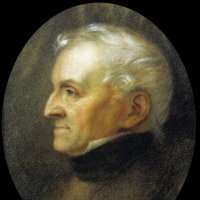 |
Filippo Taglioni, 1777–1871. Italian choreographer.
Taglioni was an Italian dancer who performed at the Paris Opéra before taking up an appointment as balletmaster with the Royal Swedish Ballet. There, he married a Swedish singer who bore him two children, Marie and Paul, both of whom became successful dancers. His name is best remembered in conjunction with Marie, who became the first superstar ballerina under his training and management, and for whom he choreographed the first defining Romantic ballet, La sylphide, in 1832.
|
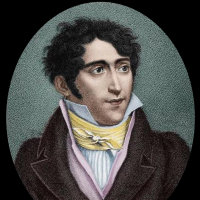 |
Jean Coralli, 1779–1854. French choreographer and composer.
The son of an Italian actor in Paris, Coralli trained as a dancer and enjoyed an early career in Vienna, Venice, and Milan, as a performer and choreographer. The pinnacle of his career came on his return to the Paris Opera, where he created the quintessential Romantic ballet Giselle in 1841, working with Jules Perrot on the choreography and Adolphe Adam on the music, both younger men than himself.
|
 |
Ferdinand Hérold, 1791–1833. French composer.
Born of a musical family in Alsace, Hérold spent most of his career on the music staff of one or other of the Paris opera houses. At the same time, he was a prolific composer, although few of his works have remained in the repertoire except for his opera Le pré aux clercs, the overture to his opera Zampa, and his 1828 score for the already-existing ballet La fille mal gardée.
|
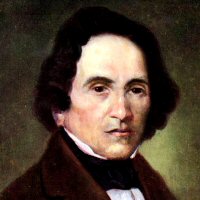 |
Giacomo Meyerbeer, 1791–1864. German composer working in France.
Although born and trained in Germany, Meyerbeer began his prolific opera career in Italy, falling under the spell of the serious operas of Rossini. He moved to Paris in 1826 and began a series of operas that essentially defined the notion of Grand Opera, among them Robert le Diable (1831), Les Huguenots (1836), Le Prophète (1849), and L'Africaine (1865).
|
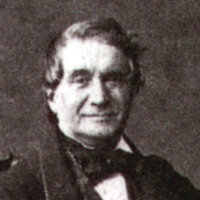 |
Cesare Pugni, 1802–70. Italian composer.
A specialist in writing for the dance, Pugni composed nearly all the ballets by Jules Perrot (including Pad de quatre but not including the earlier Giselle), and followed him to Saint Petersburg in 1850, remained there after Perrot's departure, composing ballet scores for his successors.
|
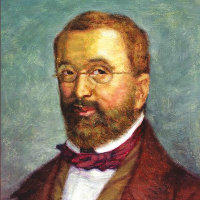 |
Adolphe Adam, 1803–56. French composer.
Adam wrote 39 operas, mainly in the comic vein, but is probably best known for his score to the ballet Giselle (1841).
|
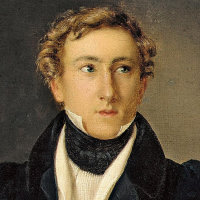 |
August Bournonville, 1805–79. Danish choreographer.
The son of an immigrant French dancer, Bournonville trained partly in Paris and partly in Copenhagen, where he spent the whole of his subsequent career. Not only was the the choreographer of over 50 works, including La sylphide (1836) and Napoli (1842), he institiuted a rigorous system of training which preserved their style intact to the present day—a legacy unmatched by any other ballet tradition.
|
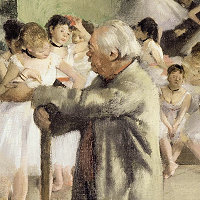 |
Jules Perrot, 1810–92. French choreographer.
The Lyon-born Perrot began his career as the dancing partner of Marie Taglioni. When she broke the partnership, fearing he might outshine her, he turned his attentions to Carlotta Grisi, and (with the older Jean Coralli) created the 1841 ballet Giselle around her. He went on to create Pas de Quatre in 1845, bringing Taglioni, Grisi, and two other ballerinas together. He ended his career as ballet master in Saint Petersburg.
|
 |
Herman Severin Løvenskiold, 1815–70. Norwegian-Danish composer.
Born in Norway, Herman Severin Løvenskiold was a teenager when his family moved to Denmark. After training in composition, he wrote scores for several productions at the National Theatre and, most notably, for August Bournonville's version of La Sylphide.
|
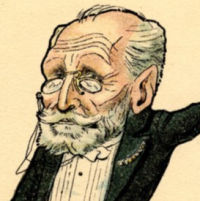 |
Marius Petipa, 1819–1910. French-Russian choreographer.
After a career as a dancer in France and Spain, Petipa accepted a position with the Imperial Theatre in St. Petersburg, and remained in Russia the rest of his life. His work as the choreographer of The Sleeping Beauty, The Nutcracker, and the 1895 revival of Swan Lake made him one of the most influential choreographers of all time.
|
 |
César Franck, 1822–90. Belgian composer.
His outsanding ability as an improviser on the organ attracted much attention, but his other works met with little interest until a concert organized by his pupils spurred him to new invention in the last few years of his life.
|
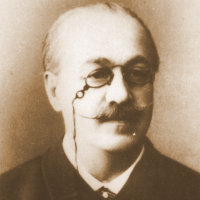 |
Lev Ivanov, 1834–1901. Russian choreographer.
A dancer and later balletmaster of the Imperial Ballet in Saint Petersburg, Ivanov collaborated with Marius Petipa on Swan Lake, taking responsibility for Acts II and IV and, later, for most if not all of The Nutcracker.
|
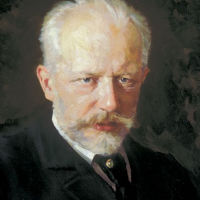 |
Pyotr Ilyich Tchaikovsky, 1840–93. Russian composer.
Tchaikovsky was the first Russian composer to gain an international reputation, in part because his Russian voice was allied to a thorough training in Western parctice. His symphonies, tone-poems, and ballets have become staples of their repertoire, but his dozen operas are less well-known, except for Eugene Onegin (1879) and The Queen of Spades (1890), both based on texts by Pushkin.
|
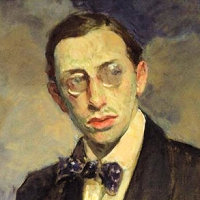 |
Igor Stravinsky, 1882–1971. Russian-American composer.
Starting as an enfant terrible in Paris with the ballets he wrote for Serge Diaghilev, he gradually pared back his resources, developing a neo-classical style between about 1930 and 1955, but eventually turning his back on tonality.
|
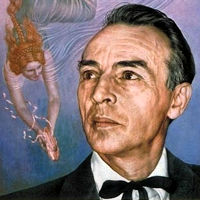 |
George Balanchine, 1904–83. Russian-American choreographer.
After work with Diaghilev's Ballets Russes, including the pioneering neo-classical Apollon musagète (1928, with Stravinsky) and The Prodigal Son (1929, with Prokofiev), he moved to America, where he eventually co-founded the New York City Ballet, remaining its artistic director for 35 years. One of the most influential choreographers of the century, he is especially noted for his abstract works with minimal decor but the greatest musicality.
|
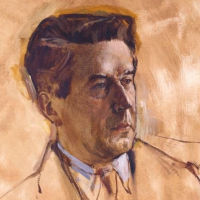 |
Frederick Ashton, 1904–88. English choreographer.
Like most choreographers, Sir Frederick Ashton began as a dancer, and continued performing even as his fame blossomed as a choreographer. He became artistic director of the Royal Ballet in 1963, but had worked with the company and its various predecessors since 1935, responsible for creating many of the works that are the foundations of English ballet today.
|
